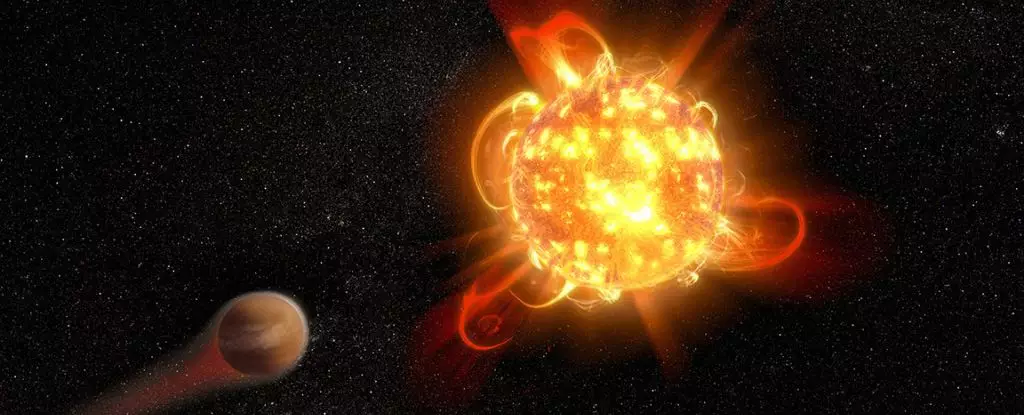M-class stars, commonly known as red dwarfs, hold a unique position in our understanding of the cosmos. These stars, smaller and cooler than our own Sun, are abundant in the Milky Way, making up roughly 70% of the stellar population. Their diminutive size and longevity—often spanning billions of years—render them intriguing subjects for astronomers and astrobiologists alike. Theoretically, their stable environments provide potential for rocky planets to orbit within habitable zones, where conditions might be conducive for life. However, a deeper examination reveals that these stars hide significant cosmic risks that could hinder the development of life on orbiting planets.
Despite their favorable characteristics, red dwarfs are notorious for producing intense stellar flares. These eruptions unleash immense bursts of energy, and their frequency far exceeds that of larger stars. While previous studies have primarily focused on the optical wavelengths of these flares, recent research prompts a reconsideration of their impact by scrutinizing ultraviolet (UV) radiation. This focus on near UV (175–275 nm) and far UV (135–175 nm) radiation uncovers a more dangerous side of red dwarfs and raises urgent questions about habitability.
The Shocking Findings from GALEX Observations
Recent research analyzed data from the now-retired GALEX space telescope, examining over a decade of observations from nearly 300,000 stars. From this expansive dataset, the authors concentrated on 182 specific flares originating from M-class stars. Unlike prior studies that have used a blackbody radiation model to describe these flares’ emissions, the new findings suggest a drastic re-evaluation of the assumptions that have long underpinned our scientific understanding of red dwarf flares.
One of the critical insights from the new research is that the stellar flares from these red dwarfs emit far more ultraviolet radiation than previously believed. Traditionally, scientists have assumed that the emissions would closely approximate a blackbody curve, with estimates placing their temperature at around 8,727 degrees Celsius (15,741 degrees Fahrenheit). Discovering that 98% of the flares exceeded the expected UV output casts severe doubts on these outdated models.
This revelation carries significant implications for planets existing within these red dwarf systems. While mild doses of UV radiation may facilitate the synthesis of complex organic molecules—potential precursors to life—excessive exposure could have catastrophic consequences. High-energy photons from these flares could erode planetary atmospheres, stripping away essential layers such as ozone, which protect potential life forms from harmful radiation.
In light of these findings, scientists are called to reassess how we define habitable zones around red dwarfs. While temperature, pressure, and the presence of liquid water are critical factors, they are no longer the sole criteria for determining habitability. With the newfound understanding of harmful UV radiation, planets that previously appeared suitable for life may now be deemed hostile. Consequently, the search for extraterrestrial life in these star systems remains fraught with uncertainty.
The study of M-class stars has taken a significant turn as we delve deeper into the implications of stellar activity. The newfound understanding of the dangers posed by red dwarfs sheds light on the intricate balance of cosmic conditions necessary for life. While these stars may seem hospitable at first glance, the perilous UV radiation and the resulting atmospheric degradation reveal a more complex reality. As we continue to explore the universe, it becomes imperative to refine our criteria for habitability. M-class stars, once considered promising candidates in our quest for extraterrestrial life, may warrant a more cautious approach, making us reconsider where and how we search for life beyond Earth.


Leave a Reply